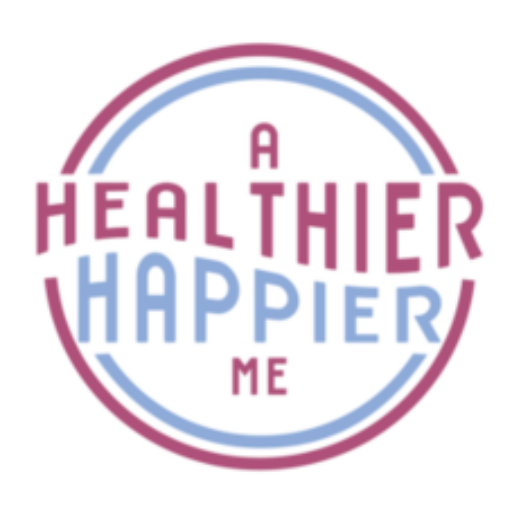The best exercise is the one you’ll actually do.
So, you’ve decided to exercise — great choice! You’ll be glad you did. You’ll have more energy, improved health, less stress, a clearer mind, and better sleep. But you may need help choosing where to start. There are many options! Read on to find your fit.
Start by asking yourself:
- What activities have you enjoyed in the past?
- What’s something new you’ve always wanted to try?
- What can you realistically add to your lifestyle?
For example:
- Did you love biking as a kid?
- Have you ever had fun dancing in your room?
- Do you enjoy walks in the park or a friendly basketball game?
- Have you always wanted to try yoga or tennis?
Your answers are clues to the kind of movement you’ll enjoy now and keep doing. If you need more inspiration, these quizzes can help match your personality and goals to the perfect workout:
Next, think about what’s already available to you:
- Is there a park nearby?
- A community center?
- Do you have a set of hand weights, resistance bands, or a yoga mat collecting dust?
- Do you have internet access or a streaming service? (These often offer workout videos for free or at a low cost!)
Now that you know some basics, let’s explore some fun workout options that could become your new favorite activities!
Yoga—In yoga, you move through different poses while focusing on your breathing to stretch, strengthen, and tone your muscles. These can feel awkward at first, but that changes with practice. Soon, you’ll feel like you’re flowing through them. Yoga has different styles. Hatha and Restorative yoga are great for beginners. They focus on relaxing the mind and body while slowly moving through the poses. More active forms are Ashtanga, Vinyasa, and Power yoga. These quicker movements get your heart pumping.
- What you’ll need: A yoga mat.
- Why you’ll love it: It relaxes the mind and body while toning your muscles.
- Learn more: Yoga: 7 Types and Finding the Right Class
Tai Chi— Have you ever seen people moving slowly through graceful poses at a park? They were probably doing Tai Chi, a gentle exercise like martial arts but slower and more approachable. You slowly move through different self-defense poses while breathing deeply. It’s good for most people and easy to learn. Like yoga, Tai Chi also has several styles. Some are flowing. Some seem like dancing. Others are more like traditional martial arts with kicking and punching.
- What you’ll need: A space big enough to move around in and a Tai Chi video.
- Why you’ll love it: It improves your mood, increases energy, and tones your muscles.
- Learn more: Mayo Mindfulness: Tai chi is a gentle way to fight stress – Mayo Clinic News Network and Instructional Audio and Video Files: Yoga, Meditation, Test Kits | Cleveland Clinic
Kettlebell Workout—A kettlebell weight looks like an iron ball with a thick, rounded handle. You hold or lift it while lunging, squatting, and repeating exercises you probably know from PE class. Adding the kettlebell to your workout helps you use all your muscles. (To avoid injury, make sure you learn the proper forms for these exercises first!)
- What you’ll need: A lightweight kettlebell.
- Why you’ll love it: It’s efficient, builds full-body strength, and burns calories fast.
- Learn more: Kettlebell Workouts: 11 Exercises To Try
Pickleball— Maybe you’re not into poses, slow moves, or repeated lunging. Maybe you want some bigger action—some competition. Try pickleball. What is it? Basically, pickleball is table tennis (ping-pong) played on a bigger court. And people love it! It’s the fastest-growing sport in America.
- What you’ll need: Paddles, a ball, and a court (check local parks or gyms).
- Why you’ll love it: It’s fast-paced, social, and a full-body workout.
- Learn more: Rules Summary – USA Pickleball
Dance—Everyone can dance! You don’t have to dance any specific way. Just move your body while listening to your favorite tunes or following along to an upbeat dance video.
- What you’ll need: A space to move around in and your playlist.
- Why you’ll love it: It’s invigorating and fun!
- Learn more: 7 YouTube Workouts You Can Do This Week For Free – Essence | Essence and Dancing and the Brain | Harvard Medical School
Walking—The easiest activity to choose for exercise, walking needs no explanation! You can walk with a friend, as you listen to something (music, podcast, book), at a park, or in the comfort of your living room. Plan to walk at a steady pace for 30 minutes a day (this can be broken up throughout the day).
- What you’ll need: Walking shoes and a plan for where you’ll walk (or a walking video if exercising indoors).
- Why you’ll love it: It’s awesome for your overall health and versatile!
Pilates—This is a form of strength and resistance training. You work through a series of slow, controlled movements and breathing that build up your core muscles (lower back and abs).
- What you’ll need: A mat, a small towel, and a Pilates video.
- Why you’ll love it: You’ll get a long, lean look while improving your posture, flexibility, balance, and coordination.
- Learn more: Pilates: What It Is and Health Benefits
HIIT—High-Intensity Interval Training is a workout that involves about 20 seconds of extreme activity (like sprinting, cycling, or jumping rope) followed by 10 seconds of rest, then repeat.
- What you’ll need: This varies depending on the activities you choose.
- Why you’ll love it: You get the benefit of a full workout in a shorter time.
- Learn more: HIIT Benefits: 7 Reasons to Try High Intensity Interval Training and High-Intensity Interval Training: A HIIT for Everyone with Katie Lawton, MEd | Cleveland Clinic
Hopefully, you’re excited about trying one of these activities. Still not sure? Do this fitness mini challenge to try them all!
You’ll never know what you like unless you try it! Here’s how to complete the challenge:
- Try each activity at least once. Remember to modify or adapt exercises to your fitness level.
- Mark off each activity after you give it a go.
- You win when you’ve completed the entire card—no shortcuts!
- Once you’ve done them all, take a picture of your completed card and share it with us using hashtags #AHHMFitAndFearless and #AHHMMoveWithUs.
References:
Exercise quiz: Find the best workouts for you – CNN.com
Quiz: Test Your Exercise I.Q. – The New York Times
Yoga: 7 Types and Finding the Right Class
Mayo Mindfulness: Tai chi is a gentle way to fight stress – Mayo Clinic News Network
Instructional Audio and Video Files: Yoga, Meditation, Test Kits | Cleveland Clinic
Kettlebell Workouts: 11 Exercises To Try
Rules Summary – USA Pickleball
7 YouTube Workouts You Can Do This Week For Free – Essence | Essence
Dancing and the Brain | Harvard Medical School
9 Walking Workouts Myths And Facts To Know In Harlem And Beyond, YouTube Walk with Rocky – Search Videos
Pilates: What It Is and Health Benefits
HIIT Benefits: 7 Reasons to Try High Intensity Interval Training
High-Intensity Interval Training: A HIIT for Everyone with Katie Lawton, MEd | Cleveland Clinic






